The Invasion of the South America and the Rio de la Plata Campaigns
By Dave Gower
The British invasions of the Rio de la Plata were a series of unsuccessful British attempts to seize control of the Spanish colonies located around the La Plata Basin in South America (today part of Argentina and Uruguay).
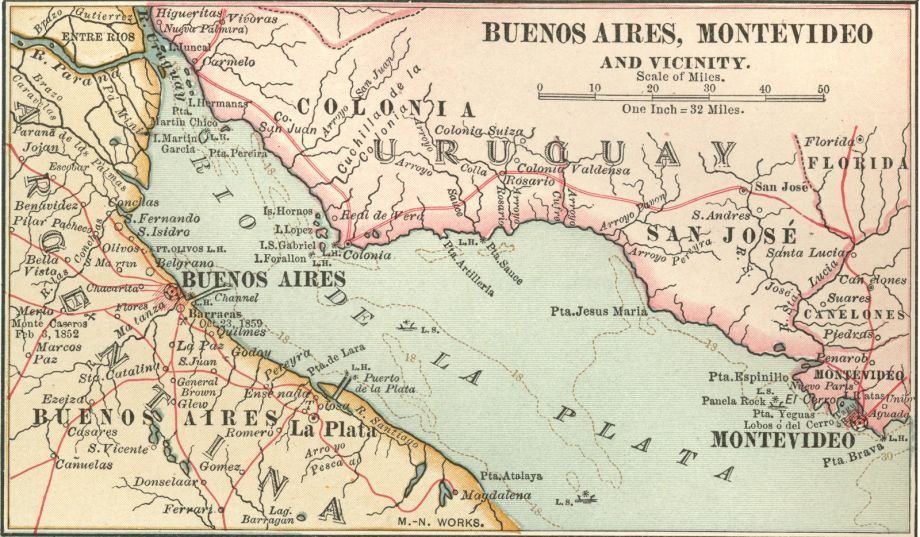
During the uneasy peace Between Britain and France in the early years of the 19th century, the British Government was unable to focus its strength on any single object. They decided to embark on a series of expeditions, which were undertaken without any real strategical goal, and lacking in knowledge of the positions and numbers of their enemies.
The first of these expeditions began in late 1805 with a force of 7,000 British troops that were sent to Southern Italy to aid a Russian Army in driving the French out.
The second expedition was a more ambitious affair. To send an Allied force of 25,000 British and Hanoverian troops to Northern Germany. This was to rid Hanover and Holland of the French, with the co-operation of the Swedes and Russians and the reliance of the Prussians to stay neutral or side with the Allies. Prussia taking matters into their own hands by coming to terms with Napoleon and marching on to Hanover, the expedition was abandoned.
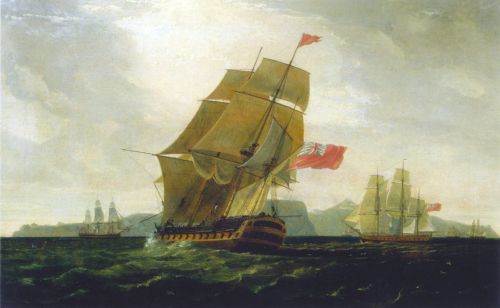
The third expedition was to drive the Dutch from South Africa, but in a buccaneer way the British ended up in South America. With an initial force of 6000 troops under the command of Sir David Baird, they set sail in late August 1805 in 61 transport ships escorted by 9 Men-O-War under Commodore Sir Home Popham. On the 7th January 1806 Baird landed near Saldanha Bay and defeated a small Dutch force there and then marched onto Capetown. At Rietvlei the British defeated the Dutch Garrison on the 8th January and went on to occupy Capetown. By the 18th January the Dutch Commander signed the capitulation, which handed over the Cape Colony to the British.
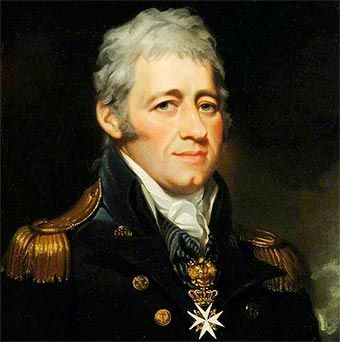
Home Popham without orders persuaded Baird to lend him the 71st Regiment under Major Dennis Pack, four light guns and 6 Dragoons and set sail across the South Atlantic to attack the Spanish at La Plata. On the way Popham stopped off at St Helena where he induced the Governor to lend him 100 Artillery with 2 guns and 300 of the St Helena Infantry Regiment. In command of the land forces was Colonel Beresford. The fleet consisted of the 64 gun frigate HMS Diadem, the smaller frigates Raisonable and Diomede, the brig Leda, four transport ships and Popham was on the 32 gun frigate HMS Narcissus. The squadron arrived in the River Plate in early June 1806. Their original objective was the fortified city of Monte Video, but a more temping prize was the Spanish capital of the area, Buenos Ayres, reported to be ill-fortified and ungarrisoned and being a main trading port was a greater lure for Popham who was no doubt after any prize money. So he sailed up river and anchored off Point de Quilmes some 8 miles below Buenos Ayres.
Here Beresford landed his small force of 1,600 infantry, 8 guns and 16 horses. By the 26th June this small force set off and advanced on the capital. After some minor skirmishing the Spanish garrison capitulated the next day. And so with a loss of 1 man killed and 13 wounded Beresford and Popham had taken the city of 70,000 inhabitants with fortifications of 86 guns.
Whilst at St Helena, Popham and Beresford had sent dispatches back to England reporting of their intentions. The British Government decided the best course of action would be to send out reinforcements. And so a force of 2,000 men with stores and supplies was sent out this was under the command of Sir Samuel Auchmuty. Beresford also wrote to Baird at the Cape to send reinforcements and Baird responded by send 2,000 men under Lieutenant-Colonel Backhouse.
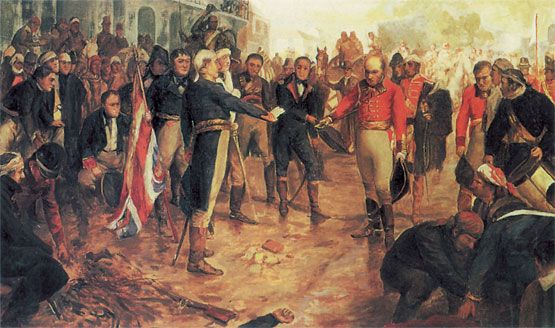
The Spanish realizing how small and unsupported the British were made plans to re-capture the city. In early August after several skirmishes on the suburbs of the city which, the British seemed to be holding their own, the Spanish finally penetrated into the city and after two days fighting Beresford became surrounded and was forced to surrender. The original terms of surrender stated that the British forces would be sent back to England but the Spanish enraged by their losses went back on their word and marched Beresford and the 71st off into the county’s interior as prisoners of war. Meanwhile Popham who was on board ship at the time picked up any remaining British troops that evaded capture and sailed down river to a safe anchorage to wait reinforcements.
In October Baird’s force arrived from the Cape, under Lieutenant-Colonel Backhouse. The next plan of attack was to secure a new base. And so Backhouse with 400 men of the 38th Regiment attacked Maldonado and drove out the 600 Spanish force at the point of the bayonet. The next day the island of Goretti surrendered. This gave the British a sure base to launch further operations.
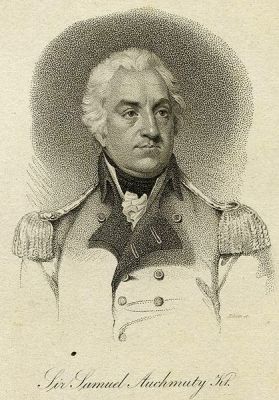
The reinforcements that the British Government had promised to send were being made ready to sail. This consisted of the 40th and 87th Regiments and three companies of the 2nd Battalion 95th Rifles. This force was to be led by Sir Samuel Auchmuty. The 95th was under command of Major Gardner, with the companies of Captains Macdonald, Elder and Dickenson; each company was 100 rifles strong. The British Government then cancelled the La Plata expedition and was to send Auchmuty force to Portugal. This was in turn abandon and so on the 9th October this force finally set sail and landed at Maldonado on the 5th January 1807. Also sent with Auchmuty was Admiral Stirling who the Admiralty sent to replace Popham who was ordered back to England to explain his diversion of H.M’s from South Africa to South America.
The commanders decided that their force was too small to retake Buenos Aries, so it was decided to attack Monte Video. Having no proper siege-train except for four 24 pounders and ammunition taken from the Stirling’s ships, they set sail up the river on the 13th January leaving a small detachment at Maldonado and Goretti. On the 16th January the force landed about 9 miles below Monte Video. The cover from the guns of the fleet protected the landings, with the Spanish unable to oppose any serious threat. With the three companies of Rifles advancing to secure the land around the area of the landing for the rest of the troops and supplies, Lieutenant Chawner was wounded and a Bugler killed. By the 19th January Auchmuty had disembarked his force and advanced towards Monte Video. On the march towards the town the British was confronted by a force of about 4000 mounted troops and again these put up little resistance and were soon driven back. By evening the British were in the suburbs of the town, and about two miles from the Citadel. Auchmuty halted the main force for the night but sent an advanced guard forward close to the walls of town. On the morning of the 20th the Spanish attacked the British with about 6000 men in two columns. The right column consisted of cavalry tried to turn Auchmuty’s left flank, while the left Spanish column of infantry attacked his centre left. The 95th who were the advanced piquet were hard pressed but held their ground, Colonel Gore Browne of the 40th brought up three companies of his regiment and charged the Spanish, it was turn for the Spanish to stand their ground with men falling on both sides. The situation changed when the Rifles and some Light Companies delivered a flank attack upon which the Spanish Infantry gave way and were pursued into the town. The Spanish lost between 200-300 killed and the same amount captured, whilst the cavalry column fell back into town without coming into action. Auchmuty was now free to invest the town without any more fighting. The 95th Rifles in this sharp action lost five killed and 25 wounded. The British now had to face the fort and citadel to finally take the town. The Spanish were in a well fortified with strong well maintained defences with many guns and was garrisoned by 6,000 men, who may not have been highly trained but were unquestionably brave. Facing them was a British force that was slightly superior in numbers but two of Auchmuty Line Battalions were mere youths with another in indifferent order. But he could count on two fine Battalions the 38th and 40th with a Battalion of Seamen and Marines 800 strong, plus the three companies of Rifles and the 17th Light Dragoons. In total he could rely on 950 sabres, 300 rifles, 4,200 bayonets and 6 guns.
Auchmuty landed his heavy guns and borrowed some from the Navy. Clearing the suburbs he constructed a battery of four 24 pounders and two mortars to play on the Citadel. He placed another two 24 pounders on the north side of the town in an attempt to stop supplies getting into the town. On the 25th January the British opened fire and with the support of the Navy bombarding the town from the sea but this had little real effect. On the 28th he moved all six of his 24 pounders against the Citadel but again other than destroying the parapet no real effect was gained. Auchmuty moved his 24pounders to within 600 yards of the South Gate and by the 2nd February had made a practicable breach and called to the Spanish Governor to surrender. His answer was defiance, as he had reports that relieving forces of 4,000 men were on their way to the town. Auchmuty would attack a dawn.
The Forlorn Hope consisted mainly of men from the 54th Regiment under Lieutenant Everard of the Queen’s and a Sergeant of the 38th. The storming party consisted of two companies of Rifles and the Flank Company of the 38th with the 40th in support. The remaining Rifle Company and the 87th would wait at the North Gate, which was to be opened by the storming party once they had gained access. The remainder of Auchmuty force would be held in reserve in the event of the Spanish relieving arriving.
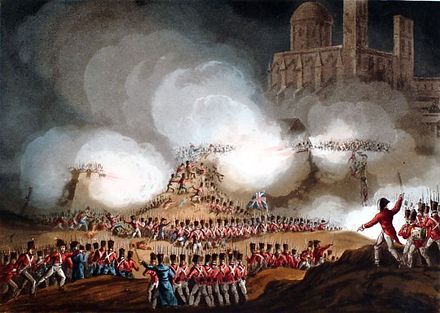
At 3 o’clock on the 3rd February the attacking column moved towards the breach in total darkness, and was almost at the foot of the walls before they were discovered. The first guns fired from the defenders and struck only one man but the next swept away 25 of the 30 of the Forlorn Hope. Major Gardner and Captain Dickerson moved towards the walls with the covering and storming parties of Riflemen, but due to the Spanish placing hides into the breach giving the appearance of an unbroken wall they could not find the breach and spent fifteen minutes milling around under a terrific fire trying to locate it. It was Captain Renny of the 40th that located it with his Light Company, but as Renny climbed onto the breach he was shot dead. Captain Dickerson now led the Rifles through the narrow breach three abreast. Once over the breach some had to drop 12 feet into town where others turned to their left and carried the various batteries along the wall. The rest of the 40th also had trouble finding the breach and had to endure heavy fire from the batteries from the walls until they also found it. On the other side of the town the second attacking force grew impatient and some Riflemen scaled the walls near the North Gate, and forcing the gates open allowing their comrades and the 87th to rush through. After a fierce fight the British cleared the town leaving only the Citadel still holding out. Again some Riflemen ascended into the Citadels towers, which gave them a commanding position from which to fire into the Citadels interior. By eight thirty the garrison surrendered. The losses for the Rifles were Captain Dickerson fell as he led his Rifleman over the breach, also a further 10 Riflemen killed with 2 Lieutenants, 4 Sergeants, 15 Riflemen wounded. The conduct of the Rifles were mentioned in dispatches with the commander-in-Chief The Duke of York awarding eleven Sergeants with medals for their gallantry. And it is with pride that the 95th added Monte Video to their honours. The British loss in total was 6 Officers and 110 men killed, and 21 Officers and 258 men wounded. The Spanish losses were very heavy about 800 killed and 500 wounded with 2,000 taken prisoner. The rest of the garrison escaping in boats across the harbour. It is worth noting that within hours after the storming the inhabitants of the town were able to go about their lives as usual, something which would not happen in other sieges during the campaigns in Spain.
The Capture of Monte Video was to be the high mark in the fortunes of the British in South America. A new British Cabinet wanted to embark on a new scheme of conquest which would not only see the British being defeated but would have to surrender and leave the continent. A new force of 4,000 men under Colonel Robert Craufurd was to be sent to capture the Spanish possessions of Chili and Peru on the west coast and to set up a direct line of communications from Chili to Buenos Ayres {the government still believing it was in British hands}. The powers that be ignored the fact that there was 900 miles of unknown country, which included the Andes Mountains and a hostile population that the British force of 6,000 would have to deal with. It was also planned to send a force from India and attack Mexico.
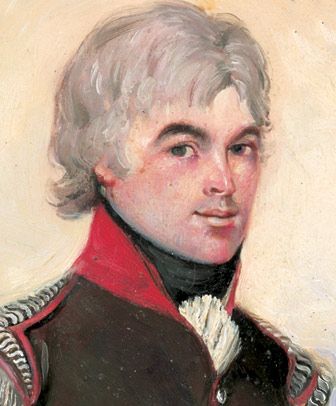
Craufurd’s force was given the title “The Remote Expedition” and within it’s ranks were five more companies of the 1st Battalion 95th. The company were those of Captains Norcott, O’Hare, Jenkinson, Ramadge and Bennet all under the command of Major McLeod and Travers. The Rifles consisted of 17 Officers, 25 Sergeants, 10 Buglers and 376 Riflemen. They set sail on the 12th November 1806 and arrived at Table Bay on the 23rd March 1807. Here Craufurd received new orders to abandon his quest for Chili and sail to Rio de la Plata and join up with Auchmuty. On the north shore of La Plata River almost opposite Buenos Ayres was the small Spanish settlement of Colonia de Sacramento. So a small detachment was sent out mainly consisting of the three companies of the 2nd 95th under Major Gardner with Colonel Pack {who along with Colonel Beresford and some of the 71st had escaped their captures and made it back to the British lines} and took hold of Colonia. Auchmuty also sent other forces around Monte Video to keep the Spanish at a distance and collect supplies and horses, and wait for the expected reinforcements from England. With a large British force now assembling at La Plata the British Government felt it prudent to send out a senior officer to take command. They chose Lieut-General John Whitelocke with Major-General Leveson-Gower as his second in command. Along with the 89th Regiment and some replacement drafts, a battery of Horse Artillery they arrived into Mote Video on the 10th May 1807. Whitelocke and Gower now superseding Craufurd and Auchmuty and their first task was to reinforce Pack’s force at Colonia, bringing his strength up to 1,500 men. The Spanish were making plans to attack and cut off Pack’s force with about 2,000 troops under General Elio who were camped at San Pedro about 12 miles from Colonia.
On the 6th June Pack received news of Elio force and the next morning at 3 o’clock Pack started off to meet him. His attacking force was made up of 54 9th Light Dragoons, 31 Artillerymen, 481 of the 40th, 247 Light Infantry and 200 Riflemen in all just over 1,000 men. They arrived at San Pedro around 7 o’clock and found the Spanish in a strong position on rising ground behind a deep marshy stream, which was also, protected both flanks. The only ford across the stream was defended by four field guns and two howitzers. Pack attacked at once throwing his three companies of Riflemen along the river in an extended formation under cover from fire from the main British force. The Riflemen crossed the river under heavy fire from the Spanish guns and formed up and advanced without firing a shot. The Spanish Cavalry fell back at once but their Infantry stood their ground until the British closed upon them when they broke and fled and were pursed with much slaughter. The Spanish lost over 120 dead with many more wounded and about 100 prisoners. Also a Spanish Standard and 8 guns were captured. The British casualties were about 48 with a third of these being caused when an ammunition wagon exploded. This happened when Major Gardner of the Rifles with 14 men were badly injured attempting to destroying it when the unfortunate explosion took place. The total losses of the 95th was 1 Rifleman killed and 2 Officers, 18 Riflemen wounded. Pack withdrew his force along with the captured guns back to Colonia.
By mid June Whitelocke force was now complete and he could plan his attack on Buenos Ayres. Owing to the nature of the river the navy could not get within 6-8 miles of the city and the only place where they could disembark under cover from the protection for the ships guns was 25 miles away at Ensenada de Barragon. Also the Spanish had been busy building gun batteries at Point de Quilmes, which protected the bridge across the river Chuelo (and was the point where Beresford had landed the previous year), so this also influenced Whitelocke decision to land further down. About two miles from Point de Quilmes was the small town of Reduction, where Whitelocke would amass his force there and reopen supply lines with the fleet before resuming his advance on Buenos Ayres.
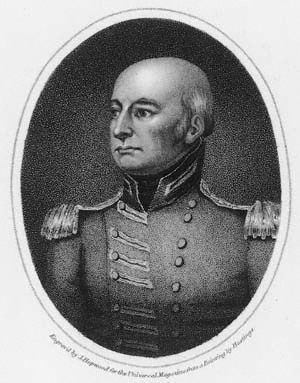
Leaving a garrison of 1,300 men at Monte Video, Whitelocke divided his force into two divisions. The 1st Division of two Brigades under Auchmuty and Craufurd, and the 2nd Division was Lumley’s and Mahon’s Brigades. Craufurd’s Brigade became known as the Light Brigade and consisted of 9 Light Infantry companies from various regiments and 8 companies of the 95th Rifles. Due to the lack of horses the 9th Light Dragoons were deployed as infantry in Mahon’s Brigade.
On the 17th June the 1st Division commanded by Leveson-Gower set sail and stopped off at Colonia to pick up Pack’s force, but due to bad winds and fog they did not reach Ensenada de Barragon and Whitelocke with the 2nd Division until the 27th June. The next day at first light the Light Brigade transferred to shallow draught boats to begin the landings. However they would all get wet feet due to a long sand bar which prevented them getting close to the shore and so were obliged to wade in. A channel was found which meant the rest of the Army landed dry-shod. Gower pushed forwards with the Light Brigade and by 1 o’clock had occupied the high ground four miles inland. Once both Divisions had landed they could begin their advance, which they did on the 29th June. Their first major obstacle was a swamp about 2 miles in width, which the Army had to cross. Through water and mud up to 2 feet deep made the advance almost impossible as men, horses and guns got stuck. It was only by brute force of hundreds seamen and soldiers pulling the guns through the swamp that they made it.
Craufurd’s Light Brigade was the advance guard sending four companies of Rifles 200 yards in front and on either flank with skirmishers in front of them, followed by two pieces of artillery with the Light Infantry Battalion behind them with a small rear guard and flankers. By the afternoon of the 29th the Light Brigade reached a small village where some Spanish Horsemen appeared and starting firing on them. Two of the advance Rifle companies attacked the village at the double quick time at which the Spanish got on their horses and fled. The 1st July they reached Reduction, where a few of the enemy appeared. Craufurd and a few Rifles advanced upon it “in the most spirited manner” again driving the Spanish from it. From there the Light Brigade headed for Paso Chico and fording the river Chuelo on the 2nd July. Whitelocke arrived at Reduction on the 1st July and halted the 2nd Division and opened his supply lines with the fleet and wait for his artillery to catch up. On the 3rd July Gower received orders to press on to Buenos Ayres and take possession of the northern suburbs of the city and establish communications with the fleet. With his two brigades about five miles apart Craufurd Light Brigade in front spotted some Spanish gaining some high ground near the ford. Craufurd gained permission to drive them off, which he did unopposed and then instead of waiting for the rest division to catch up he continued towards the city. Twice Gower sent orders for the Light Brigade to halt and Craufurd with his famous temper replied “he considered it very desirable to proceed until he gained the Corral or slaughter yard {a large open space}. Gower finally caught up with and halted the Light Brigade. As they rested the Spanish opened up with grape and round shot. Craufurd instantly ordered an attack. The Riflemen and Light Infantry companies with a cheer rushed forwards in a crescent formation straight for the guns. The Spanish Artillerymen fled and left their guns, as did the infantry whilst being hotly pursued by the Light Brigade through the outer suburbs of the city. Gower yet again sent orders to Craufurd to return which he did but swearing that he would have captured the town if he were permitted to
The Spanish had been totally surprised by the British advance. They had posted 9,000 men and 50 guns to guard the bridge over the Chuelo, 3,000 to guard another ford unknown to the British and a third force to guard Paso Chico. It was the second force that Craufurd came upon as it retired to the Corral. Meanwhile the Whitelocke and the 2nd Division arrived at the Corral by about 3o’clock in the afternoon on the 3rd July. Gower informed Whitelocke that he had summoned the Spanish Commander General Liniers to surrender the city, but received a defiant reply. For the rest of the day the British and Spanish outposts skirmished with each other until Whitelocke pulled them back and brought his force under shelter from the torrential rain, which now fell upon them.
At this time Buenos Ayres was made up of a number of perfectly straight streets about 130 yards apart crossing one another at right angles dividing the whole town into rectangular blocks. Its frontage was about 2 miles and ran from the river back about 1½ miles. On the north side (Whitelocke’s left) was the Bullring and Plaza de Toros. In the centre and on the riverfront was the Fort and close by were the Cathedral, the Church of San Francisco and the Convert of San Domingo. Between the Bullring and the Fort were two churches, Santa Catalina and La Merced. The South side (Whitelocke’s Right) was the Residencia. Whitelocke’s headquarters was near the Corral at White’s House. The town building was of a solid construction with flat roofed hoses with parapets, which were ideal for the defenders.
Whitelocke’s original plan of attack was to attack from the north side of the city using the river as his left flank and firing his heavy guns, which were to be landed from the river and bombard the city into submission. At Leveson-Gower’s suggestion the plan was altered and the attack would be from the west side (from the Corral) with 13 columns moving through the streets. The left-hand columns were to seize the Bullring whilst the rest of the attacking force would continue to the waterfront and occupy houses on the foreshore. This plan was simple enough but did not take into account anything, which the Spanish might do to stop them. Two other problems arose even before the attack had started, the first was the British relied on Spanish maps which proved to be inaccurate and led to several orders being mislaid and the second and more serious was the misunderstanding that occurred due to the confusing orders issued by Whitelocke, which led to one vital order being miswritten. The order was to prevent the left and right attacking columns inclining on each other but as it was poorly written it gave the opposite effect or was just ignored by the commanders of the attacking force.
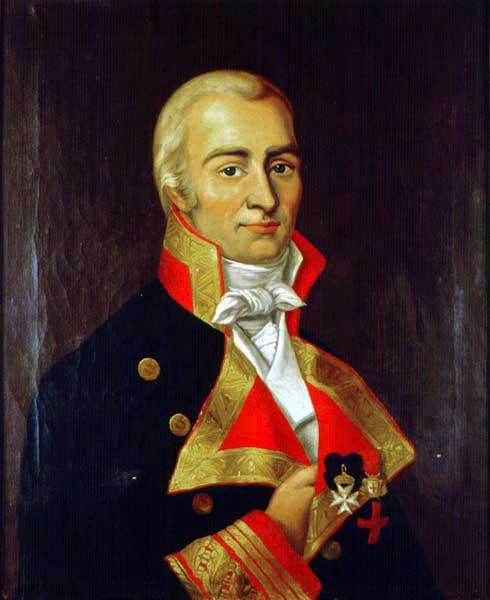
Just before dawn on the 5th July the Whitelocke’s force was in position, some 5,000 men attacking a defending force of about 15,000. At 6.30 in the morning a cannon fired as a signal for all the columns to advance into the city. The columns on the left under Auchmuty had to make their way through the street, which were continually swept by grape shot, and stormed the Plaza de Toros and securing their position on the riverfront. They captured over a thousand prisoners and 32 guns. Lumley a bit further south of Auchmuty made his attack. The 36th after some hard street fighting gained the riverbank but due to heavy fire from the guns of the Citadel had to seek cover in the surrounding houses, which they held. Lumley’s other attacking columns consisting of the 88th advanced towards the riverfront under constant artillery, musket fire plus a storm of missiles of hand-grenade, bricks etc from the housetops. Capturing a sandbag breastwork and gaining the riverfront they found themselves trapped and exposed to the fire from the Fort. Like the 36th the 88th sort shelter from the nearby houses, but they were being fired upon on every side and after several hours, which they were constantly attacked and receiving heavy losses they were forced to surrender and were marched into the Fort at about 11 o’clock. The 36th held out till about 3 o’clock and were forced to retire to Auchmuty’s position. In the centre Whitelocke moved into the city with the dismounted 6th Dragoon and 9th Light Dragoons, and with two guns moved towards the Fort in a false attack. To the extreme south the 45th moving in two columns and occupied the Residencia with very minor loss. In the centre right Craufurd Light Brigade made their attack. The left hand attacking column under Lieutenant-Colonel Pack was made up of 5 companies of Light Infantry, 4 companies of the 95th and one 3 pounder gun.
The column moved through the streets with little opposition and when they were about four blocks away from the Fort Pack turned left with the front three companies and two blocks back he ordered Lieutenant-Colonel Cadogan to do the same. This brought them within range of the Spanish defences. Cadogan got as far as the west side of the Jesuit’s College, but after sustaining a heavy loss from the Spanish firing from the housetops was obliged to fall back leaving the gun behind due to all its crew and horses either killed or wounded. Trying to gain access into a strong building but was unable to gain entry ordered his men to occupy other houses. Pack reached the east side of the collage but again came under a destructive fire in which Pack himself was wounded. Unable to continue Pack decided to fall back to Residencia, doing so they came upon the second Light Brigade column under Craufurd himself with 4 companies of Light Infantry, 4 companies of Rifles and another 3 pounder gun. They were very near the convent of St Domingo and both decided to take possession of the convent and then take if possible the Franciscan Church. Meanwhile Lieutenant-Colonel Guard of the 45th at the Residencia detached the Grenadier Company and sent them towards the town centre where they meet up with the Light Brigade. The state of the British attack was now in dead lock and the Brigade commanders unaware of the plight of the other Brigades, and not receiving any news or orders from Whitelocke.
By about 10 o’clock Lieutenant-Colonel Cadogan with Major Travers of the 95th was compelled to surrender their position after heavy fighting and a great loss of both officers and men. About midday Liniers sent out an officer with a white flag to Craufurd with the new of the 88th and others who had surrendered and that Craufurd should do the same, Craufurd refused. However Craufurd realised his Brigade was the only force in the centre of the town that was still fighting but he was totally surrounded and being attack from all sides. One attack on the gate of the convent, which was protected by the 3 pounder, was repulsed by a charge made by the Grenadiers and some Light Infantry, many of them fell but the gun was saved. With Craufurd and the remains of the Light Brigade confined to the convent with only the Riflemen providing the defence by firing from the rooftop. But this was stopped when the Spanish brought up cannons and raked the convent with grape shot. Maintaining this defence till 4 o’clock Craufurd thought about making a retreat, but with so many Spanish surrounding them, the loss would be too great. After consulting Lieutenant-Colonels Pack and Guard and Major McLeod of the 95th, they decided to seek a truce and surrendered to the Spanish. Whitelocke was pretty much ignorant of how the battle was going; he had not had any reports back from his Brigade commanders. He did send the 9th Light Dragoons forwards to the main square but they were forced to retire. His aids did inform him they could see British colours flying at the Plaza de Toros and in the centre of town, but it wasn’t till early evening he got news from Auchmuty of his gain of the Plaza de Toros and the surrender of the 88th, but he did not hear anything of Craufurd all that night. Early next day Whitelocke ordered his reserve from Reduction. The Spanish meanwhile had turned their attentions to the 45th at Residencia. Bringing up two howitzers and tried to pound them into submission. The 45th made a gallant charge and drove off the Spanish and captured the two guns. Soon after Liniers sent out a message to Whitelocke informing him of the capture of Craufurd and over a thousand men and offered their release and those captured the year before, if the British would withdraw from La Plata. Whitelocke rejected this but asked for a truce so the dead and wounded could be collected. The British losses so far were 401 killed, 649 wounded and about 1,924 were prisoners, which made up almost half the British attacking force. But the British did capture over 1,000 prisoners and 30 guns as well as holding strong points on the flanks of the city and could bring up another 6,000 troops to renew the attack.
Whitelocke realised that he would need more troops from England and time was not on his side, so he agreed to an armistice. After a mutual exchange of prisoners, the British would leave Buenos Ayres in ten days and Monte Video in two months. Some say this was the only wise decision Whitelocke made. The men under his command felt betrayed, after all they had done. This was also fuelled by their treatment they received from the Spanish. Some British wrote on the walls of the city “General Whitelocke is a coward, a traitor or both”. When Whitelocke returned to England he was Court-Martial being cashiered with his sword being broke over his head. But was Whitelocke entirely to blame? Some of the blame must be given to Sir Home Popham who was the one who on his own back to the British to South America, and the British Government who when they sent out Whitelocke and Craufurd gave them such absurd and unclear objectives. But to the men of the 95th Rifles they felt the blame must rest with Whitelocke. The 1st Battalion 95th Rifle losses were 1 Officer, 2 sergeants, 2 Buglers and 36 Riflemen killed. 6 Officers, 8 Sergeants, 2 Buglers and 73 Riflemen wounded and 2 Sergeants, 2 Buglers and 39 Riflemen missing. The 2nd 95th Rifles losses were 3 Sergeants, 1 Bugler and 46 Riflemen killed. 2 officers, 6 Sergeants and 40 Riflemen wounded. They all arrived back in England by December 1807.
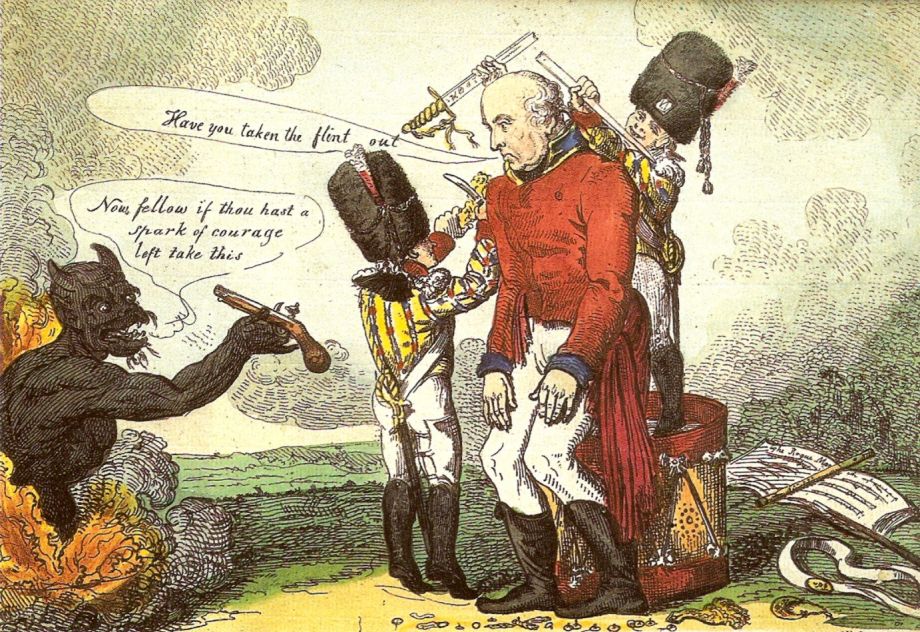
One Rifleman made a name for himself. An Irishman called Tom Plunkett a noted shot in the Regiment. During the battle at Buenos Ayres Rifleman Plunkett was on the rooftop of the convent shooting anyone who came near, and upon seeing a Spanish Officer waving a white flag, Plunkett exclaimed “I’ll have a slap at the fellow with the white hand-kerchief” and promptly shot him and mortally wounded him. This angered the Spanish who then brought up some cannons and drove Plunkett from the roof. Later in life Plunkett was asked how many Spaniards had he shot whilst on the roof, he replied about 20, plus a gentleman with a flag of truce. War can be a merciless business.
The 95th Rifles through their time in South America gained a new regimental toast at the expense of General Whitelocke, which was:
“Success to grey hairs - and bad luck to Whitelockes”
